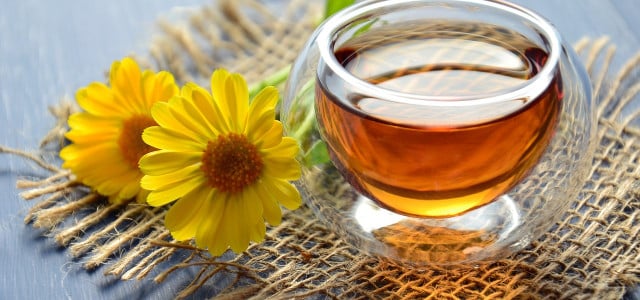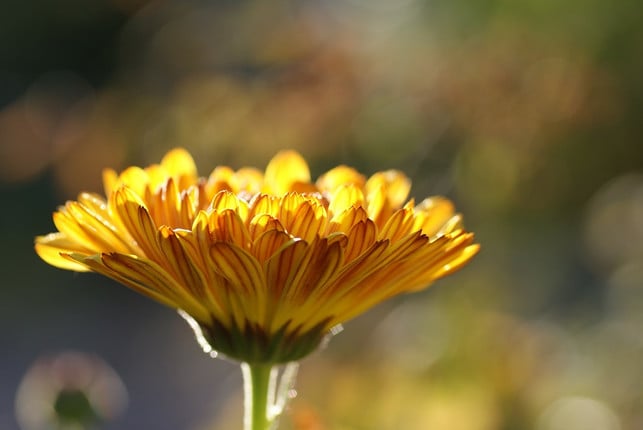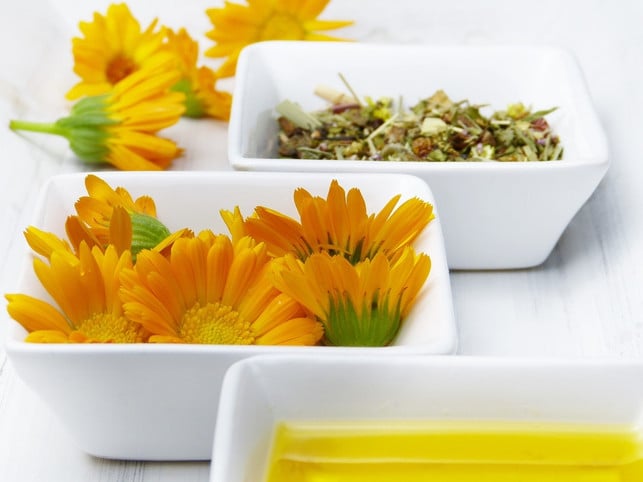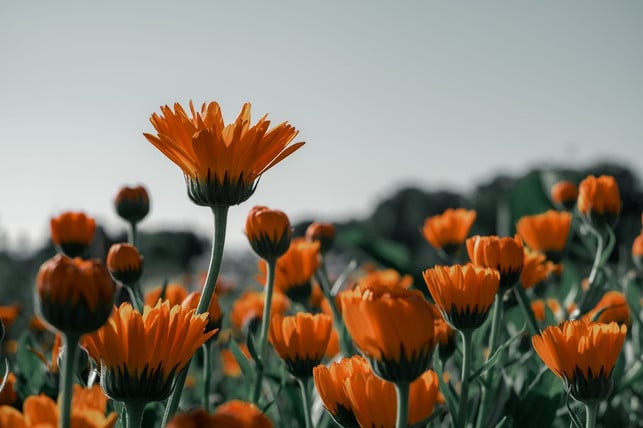
You can easily make marigold tea yourself. Tea made from marigold flowers can help with digestive problems, inflammation or menstrual problems.
Marigold is probably one of the best-known medicinal plants worldwide. Most people know the flower from marigold ointment to support wound healing. But calendula is also suitable for internal use. Hildegard von Bingen already relied on marigold for digestive problems and inflammation.
The plant belongs to the daisy family and its bright orange flowers bring color to meadows and gardens from June to September. The flower owes its name to its petals: as they dry, they “curl”.
Marigold tea: effects and ingredients

(Photo: CC0 / Pixabay / HeikeFrohnhoff)
In 2015, the Indian Journal of Pharmaceutical Science & Research dealt extensively with marigold as a medicinal plant and was able to demonstrate the following effects:
- Calendula has been tested against various strains of bacteria and fungi and demonstrated strong antimicrobial and antifungal properties.
- Calendula supports wound healing both internally and externally. This applies to open wounds as well as burn injuries. The plant also has an anti-inflammatory effect.
- The plant has antioxidant properties. This reduces oxidative stress and helps the body with cell renewal.
Which ingredients are specifically responsible for which effect has not yet been fully clarified. The ingredients include, among others:
- Tritersaponins
- Flavonoids
- essential oils
- sugar molecules
Marigold tea: It is used for the following complaints
The extract or infusion from marigold is primarily used externally and is used for the following complaints:
- small wounds
- Sunburn
- mild inflammation
- Inflammation in the mouth and throat
These effects and areas of application are also medically recognized. The internal use of marigolds in the form of marigold tea, however, is based on experience and has not been sufficiently scientifically proven. It is used, for example, for:
-
Gastrointestinal complaints
- Menstrual cramps
- constipation
- Liver weakness
- Bile problems
How to make marigold tea: Here’s how

(Photo: CC0 / Pixabay / silviarita)
How to prepare marigold tea:
- Pour 250 milliliters of boiling water over three to five dried flowers. Alternatively, you can use about twice the amount of fresh flowers.
- Let the tea steep for five to ten minutes before removing the flowers.
- Since some of the active ingredients remain in the flowers, you can also simply drink the marigold flowers. These are edible flowers.
Tip: If you have injuries or inflammation in your mouth, you can gargle the marigold tea several times a day and then drink it. If you want to support wound healing, you can dab affected areas with the tea. If you want to use the tea internally for digestive problems, menstrual cramps or other complaints, you can drink around two to three cups daily.
Grow marigolds yourself

(Photo: CC0 / Pixabay / Couleur)
Unfortunately, according to Nabu, there are hardly any wild-growing marigolds that you can harvest in Germany anymore. The only species of marigold that still grows wild in Central Europe is the field marigold. But it is also very rare to find.
However, you can easily plant marigolds in your garden or on your balcony:
- The annual plant requires a sunny location and loose, humus-rich soil. From April to June you can simply sow the seeds directly into the bed or pot. It’s best to loosen the soil beforehand and cover the seeds by about a centimeter with soil.
- Marigold is also ideal for various mixed crops, for example with vegetables such as pumpkin, tomatoes, cucumbers. Strawberries and various herbs such as parsley, savory or nasturtium can also benefit from marigold as a neighbor.
To make marigold tea yourself, it is best to harvest the flowers on a sunny, dry day. Place them on a cloth or newspaper to dry. While the flowers are drying, you should avoid direct sunlight, otherwise the active ingredients will be lost.
More information here: Drying herbs – 4 herbs that are well suited
You can store the flowers in an airtight and dry place, such as in a glass jar, in a dark place for up to a year.
Read more on Techzle\.com:
- Make your own tea: ideas for delicious tea blends
- Chamomile tea: Everything about the effects of the medicinal plant
- Peppermint tea: What you need to know about its effects
Edited by Luise Rau
** marked with ** or orange underlined Links to sources of supply are partly partner links: If you buy here, you are actively supporting Techzle\.com, because we then receive a small part of the sales proceeds. More info.